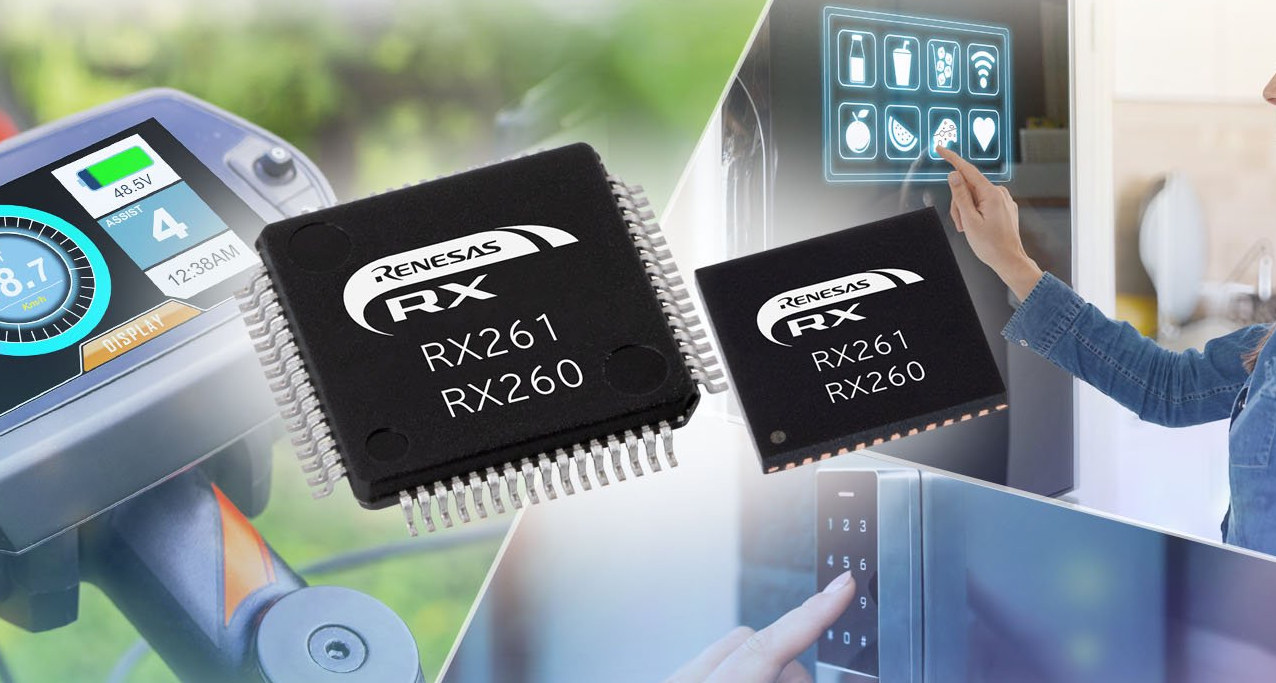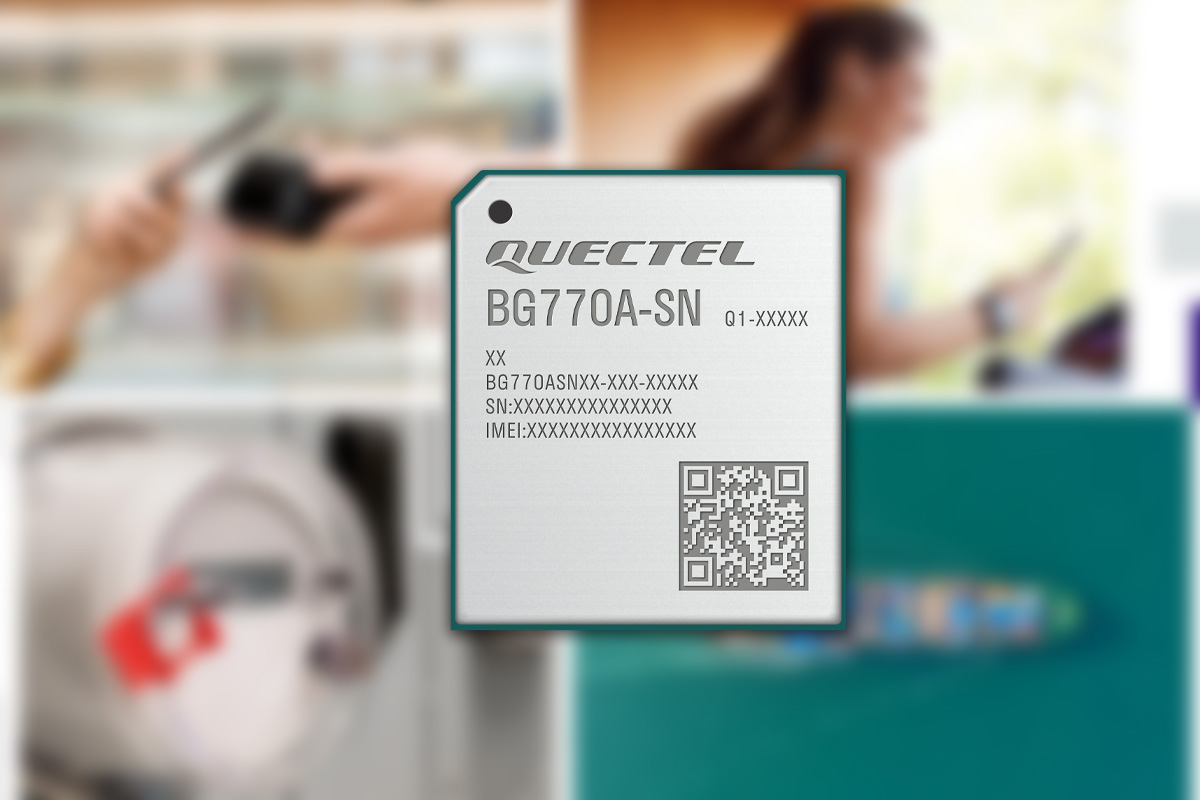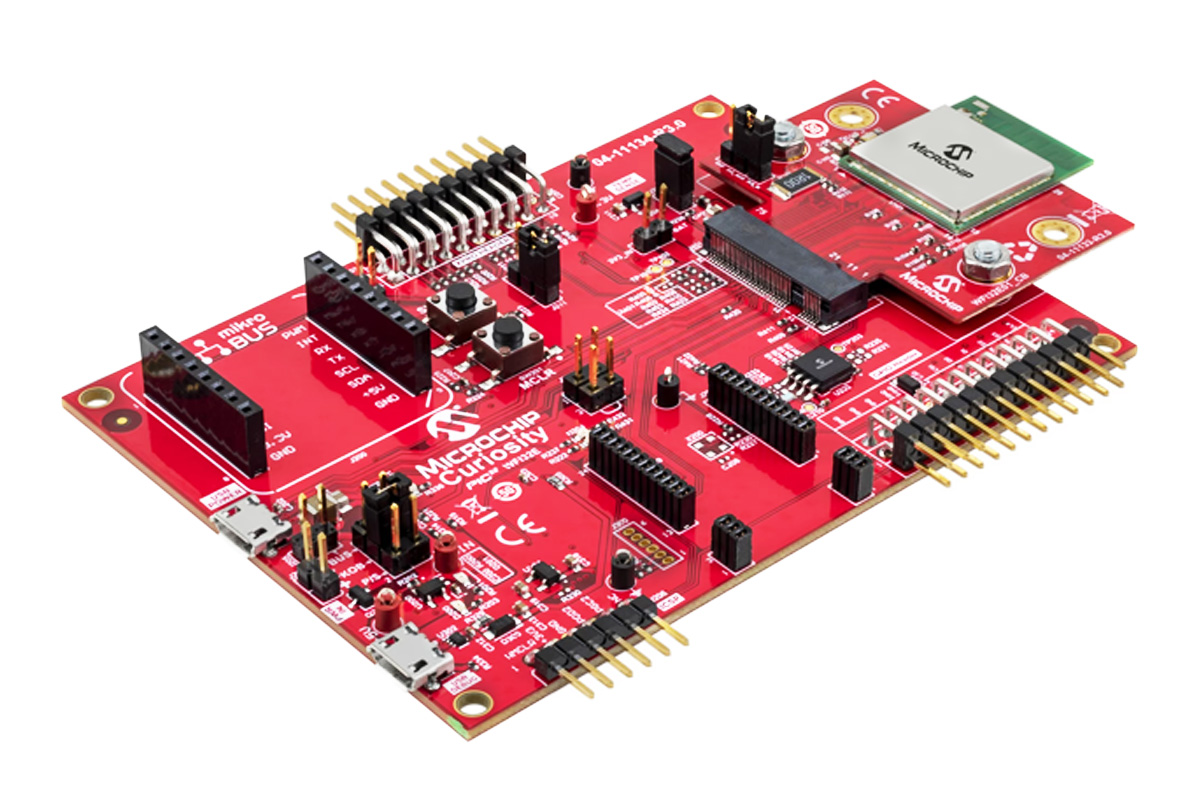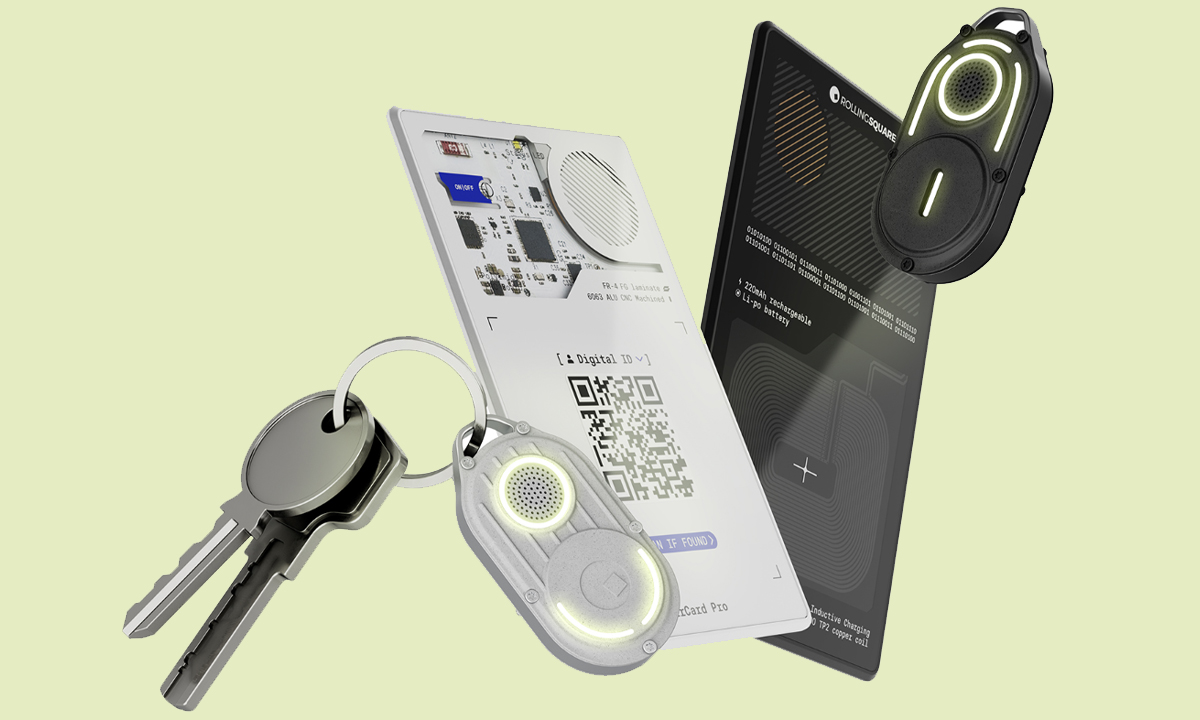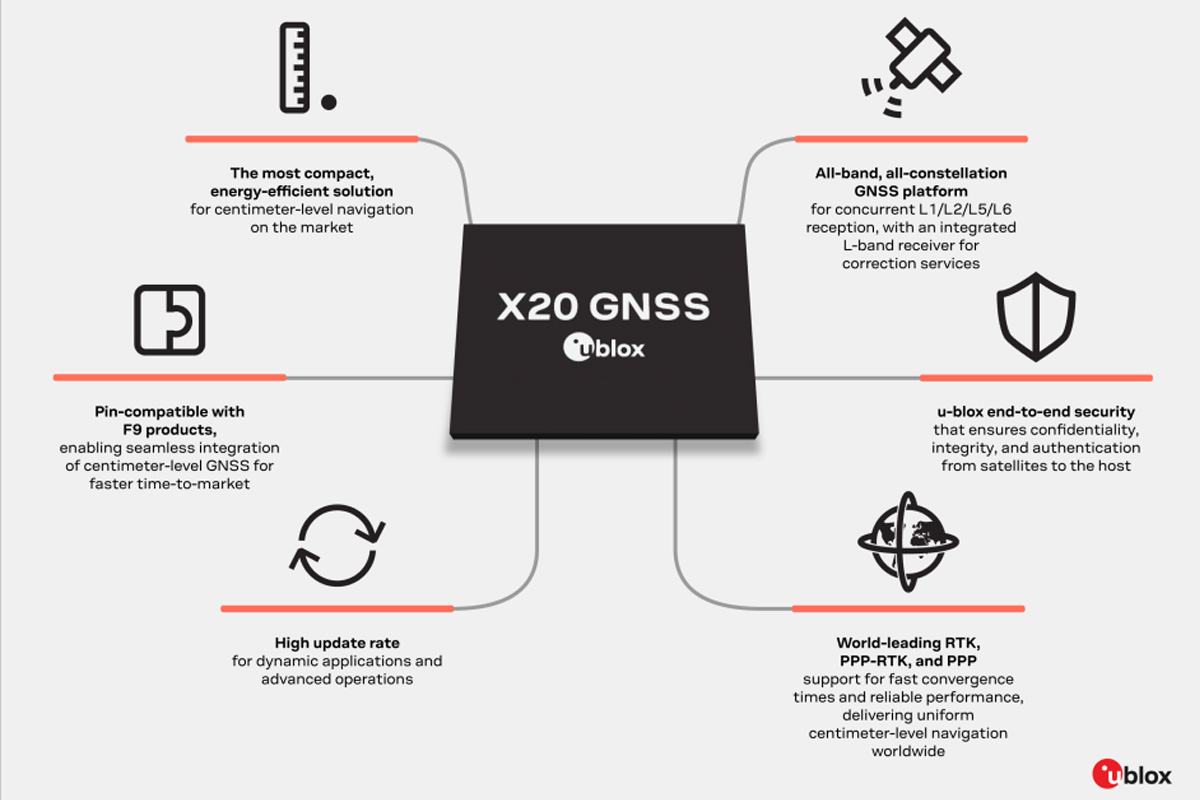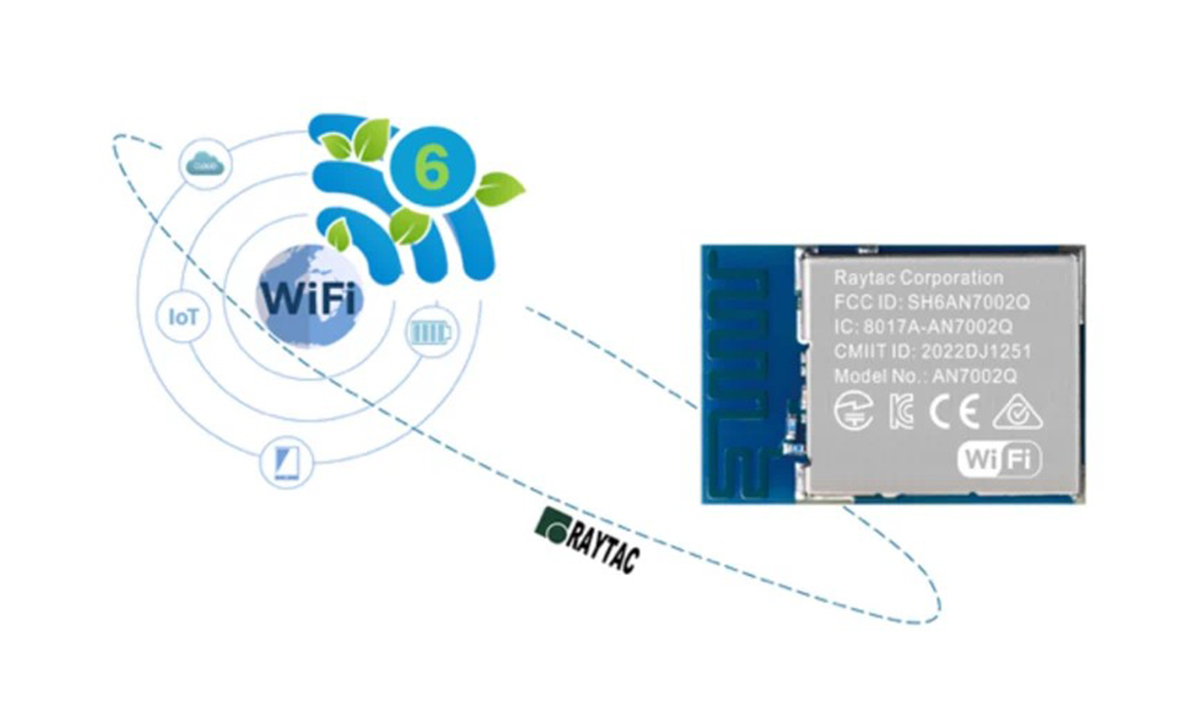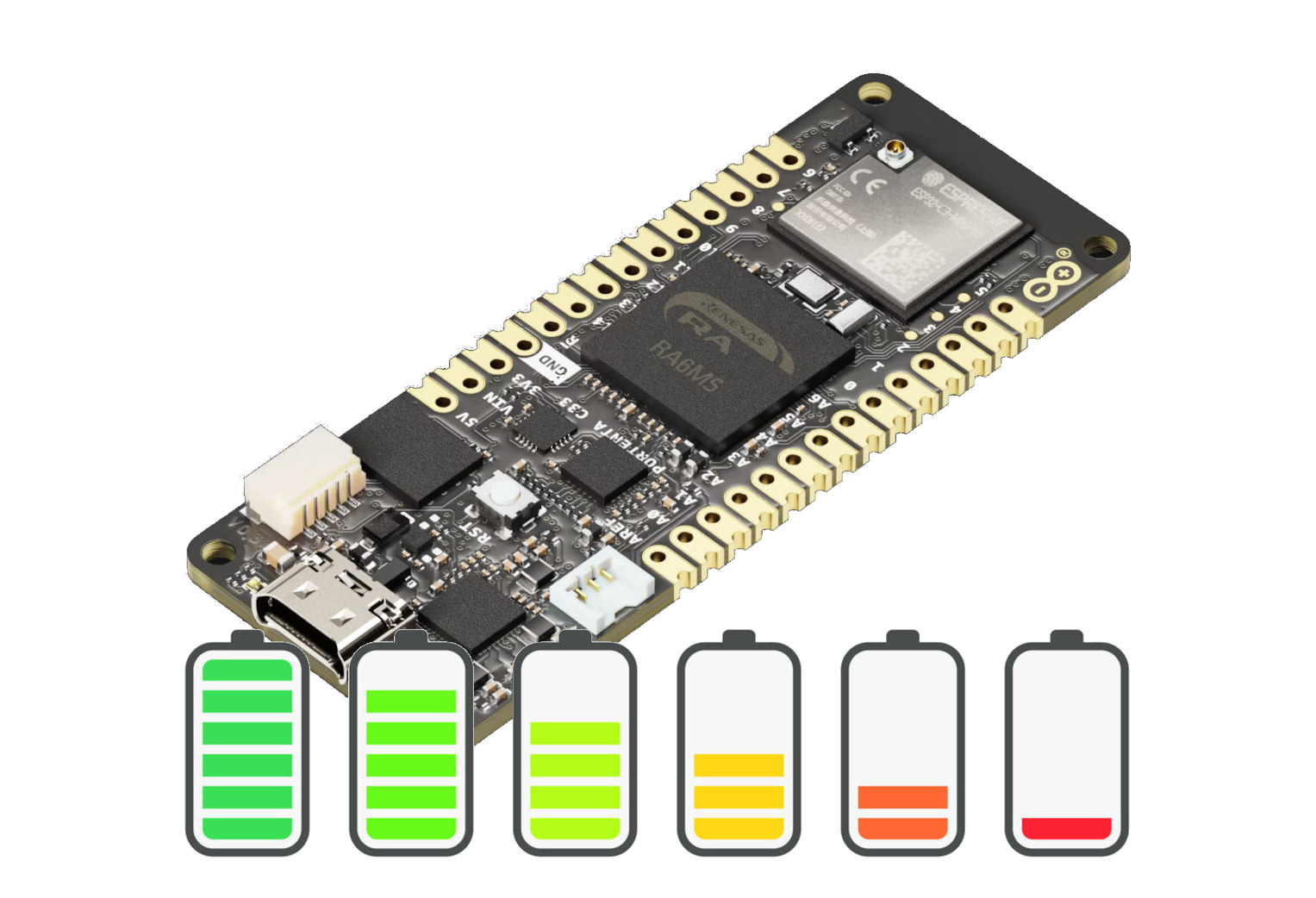The Renesas RX260 and RX261 two new 64 MHz microcontrollers part of the high-performance, high-efficiency RX product family with integrated capacitive touch-sensing and high power efficiency in both active and standby modes. The microcontrollers are based on the RXv3 core with a performance score of 355 CoreMark @ 64MHz, which is “2.5 times higher than competing 64 MHz class MCUs.” The chips are also power-efficient, with a consumption rate of 69μA/MHz during active operation and 1μA only in standby mode. According to Renesas, the chips are up to 25% more efficient in active mode and 87% more efficient in standby mode than other 64 MHz class MCUs. Another competing factor is the onboard 8KB of data flash, eliminating the need for external EEPROM. The RX260 and RX261 Group MCUs support noise- and water-resistant capacitive touch via Renesas’ third-generation capacitive touch IP (CTSU2SL). They also integrate an “automatic judgment function” that […]
Quectel BG770A-SN industrial IoT module offers 5G, NB-IoT, and NTN satellite connectivity
Quectel has recently released the BG770A-SN industrial IoT module which comes in an ultra-compact form factor and supports both NTN and TN and features GNSS for positioning functionality. This 5G-ready module also supports iSIM and utilizes the GEO satellite constellation for worldwide coverage. Additionally, the module offers integrated security elements (ISE) and can operate in between the industrial temperature range of -40°C to +85°C. Previously we have written about the Quectel BG95-S5 5G NTN + LTE IoT module which supports NTN satellite (L-band and S-band) plus LTE Cat M1, Cat NB2, and eGPRS as fallback options, designed for applications where continuous connectivity is critical. We have also written about the Quectel CC660D-LS IoT-NTN module, which is an IoT NTN module designed specifically for Skylo’s satellite network. The new BG770A-SN module is a little different from the previous two because it supports LTE Cat M1, LTE Cat NB1/NB2, and NTN over […]
Microchip PIC32MZ-W1 is a 32-bit MIPS WiFi MCU with 60+ GPIO, USB, CAN Bus, Ethernet, and more
Microchip recently released the PIC32MZ-W1 wireless MCU along with 20 other WiFi parts, including WiFi MCUs, link controllers, network controllers, and plug-and-play modules. Among them, the PIC32MZ-W1 wireless MCU is the most interesting because of its 32-bit MIPS microAptiv M-class core running at up to 200MHz, advanced hardware security features, and integrated Microchip Trust Platform for secure cloud authentication. Over the years ESP32 MCUs have become the go-to choice for wireless applications. Still, one problem we always have with ESP32 SoCs is their limited GPIO option due to their strapped-out pin structures. But this new MCU has over 60 GPIO pins to work with along with Ethernet MAC, USB, CAN Bus, CANFD, SPI, I2C, SQI, UART, ADC, JTAG, and more. PIC32MZ-W1 wireless MCU specifications MCU MIPS32 M-Class core clocked at 200 MHz 16KB I-Cache, 16KB D-Cache microMIPS mode (up to 35% smaller code size) DSP extensions (4x 64-bit accumulators, single-cycle […]
XIAO ESP32S3 for Meshtastic & LoRa devkit features Wio-SX1262 LoRa module
The “XIAO ESP32S3 for Meshtastic & LoRa” is an ESP32-S3 LoRa dev kit that combines an XIAO ESP32S3 board with the tiny Wio-SX1262 LoRa module connected through a board-to-board connector. This compact devkit supports LoRa (862-930MHz), Wi-Fi (2.4GHz), and Bluetooth 5.0 (BLE), with a 5km range for LoRa and a 100m+ range for Wi-Fi/BLE. The kit also has a USB Type-C interface, a built-in power management chip, and multiple I/O options such as IIC, UART, and GPIO. It supports external LoRa antennas and can be extended with XIAO expansion boards for more complex setups. These features make this device suitable for projects such as LoRaWAN gateways, IoT sensors, Meshtastic nodes or routers, and applications where space is limited. XIAO ESP32S3 for Meshtastic & LoRa specifications: SoC – Espressif Systems ESP32 with dual-core Xtensa LX7 microcontroller up to 240MHz Wireless Connectivity LoRaWAN via Semtech LX1262 Output Power – Up to +22 […]
AirCard Pro and AirNotch Pro Bluetooth trackers support Google/Apple network integration (Crowdfunding)
Rolling Square introduces its latest Bluetooth trackers – AirNotch Pro and AirCard Pro – designed for use with personal items like keys, wallets, bags, and more. Both trackers are designed for portability, and the AirNotch Pro is designed as a keyring, while the AirCard Pro suits wallets with a thinner, credit card-like design. The products integrate into Apple and Google’s tracking networks, with some features currently limited to Apple. Previously, we covered the SenseCAP T1000, a credit card-sized LoRaWAN GPS tracker powered by Semtech’s LR1110. Several years ago we covered some Bluetooth beacons such as the Puck.js or RuuviTag, but we have yet to explore Bluetooth-only trackers with wireless charging capabilities. Rolling Square AirCard Pro Bluetooth trackers AirCard Pro technical features: Network White version – Operates on Google’s Android Find My Device network (Android 6 or above) Black version – Operates on Apple Find My network (iOS 14 or above) […]
u-blox X20 all-band GNSS module offers centimeter-level accuracy, u-blox F9 pin-to-pin compatibility
u-blox has recently launched the X20 all-band GNSS module with an integrated L-band receiver that supports all available GNSS satellite signals (L1/L2/L5/L6) and can provide centimeter-level accuracy globally. The module also includes PPP (Precise Point Positioning) correction on top of RTK (Real-time Kinematic) and features like end-to-end security functions, advanced jamming/spoofing detection, and other software features. These features make this device useful for industrial automation, automotive, UAVs, and ground robotics applications. Multi-band GNSS receivers using L1, L2, L5, and the new L6/E6 band frequencies enhance accuracy, reliability, security, and other benefits. That includes better PNT (Positioning, Navigation and Timing) and RTK performance, access to global precise point positioning (PPP) services like Galileo HAS, faster convergence times in PPP for industrial and automotive use, and access to regional PPP services like MADOCA-PPP. Additionally, it helps comply with regional regulations like AIS-140 for NavIC in India and improves jamming and spoofing immunity […]
Raytac AN7002Q – A smaller nRF7002 Wi-Fi 6 module for industrial IoT applications
IoT solutions company Raytac has introduced the AN7002Q Wi-Fi 6 module series, which integrates Nordic Semiconductor’s nRF7002 chipset and is designed for Industrial IoT, smart home, healthcare, consumer electronics, and automotive applications. They can be paired with Raytac’s MDBT53 Bluetooth LE modules based on the nRF5340 multiprotocol SoC, supporting Wi-Fi and Bluetooth LE solutions. The AN7002Q is a low-power Wi-Fi 6 module supporting dual-band 2.4 GHz and 5 GHz operation with a maximum PHY data rate of 86 Mbps (MCS7). It is compatible with IEEE 802.11ax, a/b/g/n/ac standards, and connects to a host SoC or MCU via SPI or QSPI interfaces. The module also supports coexistence with Bluetooth LE, Thread, and Zigbee systems, making it ideal for IoT applications. Previously, we covered the Abluetech PTR7002, a low-power wireless module based on the Nordic Semiconductor nRF7002. The PTR7002 has a slightly larger size and offers more GPIO options, while the AN7002Q […]
Arduino releases a power management library for Arduino Pro modules to optimize power consumption
Arduino has released a new power management library designed for Arduino Pro modules to help users monitor battery usage, fine-tune charging parameters, and optimize the power consumption of their Arduino code by notably enabling sleep and standby modes on supported devices. Currently, the Arduino Portenta H7 boards, the Arduino Portenta C33, and the Nicla Vision module are supported by the new power management library. The company explains some boards consume under 100 microamperes in deep sleep mode enabling months or even years of continuous runtime on a single charge, so making use of those features is important to lower the power consumption of battery-powered IoT devices and wearables. Arduino power management library key features: Battery monitoring – Reports battery metrics such as voltage, current, percentage, and temperature. Battery health tracking – Monitors battery health with detailed insights into temperature and reported capacity. Charging control – Monitors and adjusts charging parameters […]


